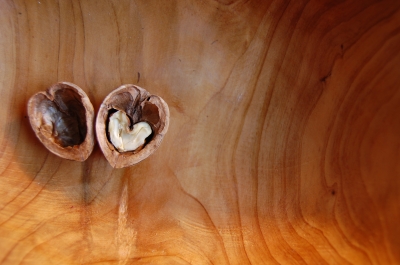How to Stock a Heart Healthy Kitchen
 If you keep heart healthy foods on hand and easily accessible you will be much more likely to see success in your efforts to lower cholesterol and blood pressure. If you keep unhealthy foods within reach you will make it much harder to achieve your heart health goals. Don’t rely on will power! Stock you kitchen for success. Here are some essentials to keep on hand:
If you keep heart healthy foods on hand and easily accessible you will be much more likely to see success in your efforts to lower cholesterol and blood pressure. If you keep unhealthy foods within reach you will make it much harder to achieve your heart health goals. Don’t rely on will power! Stock you kitchen for success. Here are some essentials to keep on hand:
Whole grains, such as barley, oats, rice, buckwheat, and quinoa, are rich in fiber, antioxidants, vitamins, and minerals. These nutrient dense grains promote a healthy heart.
Olive oil
Continue reading
2 Foods to Lower Cholesterol
To begin promoting lower cholesterol you want to replace these less healthy food choices with heart healthy options.
Here are 2 foods you can add to your diet to promote a lower cholesterol:
1. Atlantic Salmon
Salmon is a rich source of omega 3 fatty acids. Omega 3’s have many benefits, some of which include decreased lipoprotein A, lowered triglycerides, reduced blood pressure, elevated HDL cholesterol, and decreased risk of blot clots.
Some additional sources of omega 3 include fish, ground flaxseed, and walnuts.
Walnuts and Heart Health

There is some new evidence provided by a Yale University study linking walnuts to improved cardiovascular health. The findings show an improvement to the endothelial function in individuals with type II diabetes when study participants consumed a daily serving of 2 ounces of walnuts.
The study also found the addition of walnuts promoted increased fasting serum glucose levels, lower cholesterol levels, and lower LDL cholesterol.
Walnuts provide poly-unsaturated fatty acid omega 3’s, particularly alpha-linolenic acid (ALA). This fatty acid has been linked to many heart health benefits, such as decreased lipoprotein(a), lower triglycerides, and improved heart rhythm.
Here are a few ways to add walnuts to your diet:
- Mix walnuts with dried fruit for a nutritious snack
- Add toasted walnuts to a salad or pasta dish
- Sprinkle chopped walnuts on oatmeal or breakfast cereal
Keep in mind calories and portion control! A 1.5 ounce serving of walnuts provides ~278 calories. There are approximately 20 walnut halves in a 1.5 ounce serving.
All the best,
Lisa Nelson RD
How to Lower Cholesterol in 8 Simple Steps
http://www.lowercholesterolwithlisa.com
Image courtesy of Aleksa D / FreeDigitalPhotos.net
Omega 3’s and Walnuts

Sometimes people wonder about the health benefits of the black walnut versus the more common English walnut, so I’m going to provide you some quick info.
The English walnut contains more omega 3 fatty acids per ounce than the black walnut (2.6 grams versus .57 grams). To promote heart health, increasing your omega 3 fatty intake is a good step to take, so opt for the English walnut (which is easier to find anyway).
Another component to keep in mind:
The type of omega 3 fatty acid contained in walnuts is ALA (alpha linolenic acid). The conversion of ALA to EPA and DHA (the two types of omega 3 fatty acids linked to health benefits) is inefficient.
The Heart of Health
Be sure to sign up for The Heart of Health to receive regular heart health and weight loss tips from dietitian Lisa Nelson!
Image courtesy of Aleksa D / FreeDigitalPhotos.net



